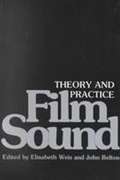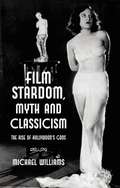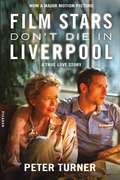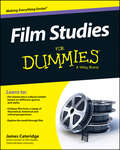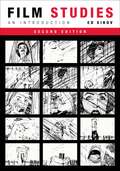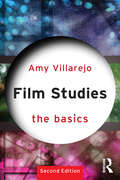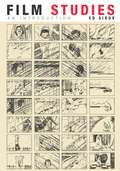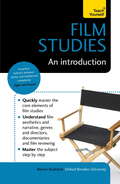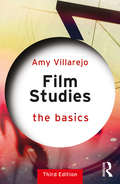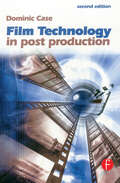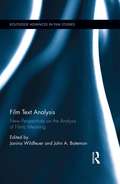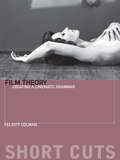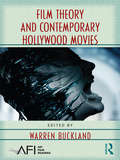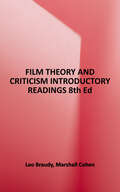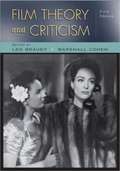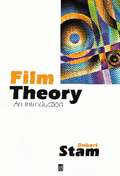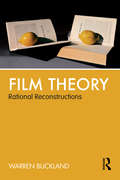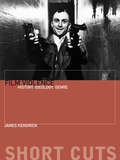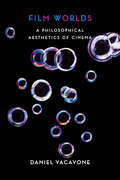- Table View
- List View
Film Sound: Theory and Practice
by Elisabeth Weis John Belton B. WeissThis classic anthology provides essential models for analyzing sound stylistics through the detailed study of critical sound films. Elisabeth Weis and John Belton carefully curate major essays from the world's most respected film historians, aestheticians, and theorists, including Douglas Gomery, Barry Salt, Rick Altman, Mary Ann Doane, S. M. Eisenstein, V. I. Pudovkin, René Clair, Béla Belázs, Siegfried Kracauer, Christian Metz, David Bordwell, Kristin Thompson, Noël Burch, and Arthur Knight. Their selections recount the innovations and triumphs of Ernst Lubitsch, Fritz Lang, Orson Welles, Alfred Hitchcock, Rouben Mamoulian, Dziga Vertov, Robert Bresson, Jean-Luc Godard, Robert Altman, and Francis Ford Coppola, among many others, and explicate the techniques and practices of sound filmmaking from initial recordings to final theater playback. Film Sound is the ideal companion for anyone seeking both a comprehensive introduction to the form and a rich survey of its historical and global evolution.
Film Stardom, Myth and Classicism
by Michael WilliamsSince the golden era of silent movies, stars have been described as screen gods, goddesses and idols. This is the story of how Olympus moved to Hollywood to divinise stars as Apollos and Venuses for the modern age, and defined a model of stardom that is still with us today.
Film Stars Don't Die in Liverpool: A True Love Story
by Peter TurnerSOON TO BE A MAJOR MOTION PICTURETHE GOLDEN AGE OF HOLLYWOOD, A YOUNG BRITISH ACTOR, A LOVE AFFAIR, AND A TRAGEDY, FILM STARS DON’T DIE IN LIVERPOOL IS THE TOUCHING STORY OF THE LAST DAYS OF A HOLLYWOOD ICON.On September 29, 1981, Peter Turner received a phone call that would change his life. His former lover, Hollywood actress Gloria Grahame, had collapsed in a Lancaster hotel and was refusing medical attention. He took her into his chaotic and often eccentric family’s home in Liverpool to see her through her last days. Though their affair had ended years before, it was to him that she turned in her final hour of need.Taking place over the course of three weeks in Turner’s larger-than-life working-class family home, Film Stars Don’t Die in Liverpool is an affectionate, moving, and wryly humorous memoir of friendship, love, and stardom.
Film Studies For Dummies
by James CateridgeMake sense of the world of cinema Want to pull back the curtain on film? This hands-on, friendlyguide unravels the complexities of film and helps you put cinemainto a cultural context. You'll get an easy-to-follow introductionto different film genres and styles, learn about the history ofcinema, get to know who makes up a filmmaking team, explore globalcinema from Hollywood to Bollywood and much more.Film Studies For Dummies will open your mind to how thefilm industry works and help you to discover the impact of film onpopular culture. You'll get easy-to-read information on analyzingand critiquing film from a range of theoretical, historical andcritical perspectives, and learn how people communicate ideas infilm. You'll also be able to shine a light on how stories aredeveloped in movies, understand how a storyline is related tobroader issues in society and become a well-versed and insightfulfilm student.Covers the narrative, artistic, cultural, economic andpolitical implications of cinemaProvides conceptual frameworks for understanding a film'srelationship to realityExplores how people tell stories and communicate ideas infilmHelps you excel as a student of filmWhether you're planning to study film, a humanities student witha forthcoming module on film or a film enthusiast wondering if thismight be the future for you, Film Studies For Dummies hasyou covered.
Film Studies, second edition: An Introduction (Film and Culture Series)
by Ed SikovFilm Studies is a concise and indispensable introduction to the formal study of cinema. Ed Sikov offers a step-by-step curriculum for the appreciation of all types of narrative cinema, detailing the essential elements of film form and systematically training the spectator to be an active reader and critic. He treats a number of fundamental factors in filmmaking, including editing, composition, lighting, the use of color and sound, and narrative. His description of mise-en-scene helps readers grasp the significance of montage, which in turn reveals the importance of a director’s use of camera movement.Film Studies is designed for courses on film history, film theory, and popular culture. Its straightforward explanations of core critical concepts, practical advice, and technical, visual, and aesthetic aspects anchor the reader’s understanding of the formal language and anatomy of film and the techniques of film analysis.The second edition of this best-selling textbook adds two new chapters: “Film and Ideology,” which covers how to read a film’s political and social content, and other key topics in film theory, and “Film Studies in the Age of Digital Cinema,” which explores the central problems of studying film when “film” itself is no longer the medium.
Film Studies: A Global Approach (The Basics)
by Amy VillarejoFilm Studies: The Basics is a compelling guide to the study of cinema in all its forms. This second edition has been thoroughly revised and updated to take account of recent scholarship, the latest developments in the industry and the explosive impact of new technologies. Core topics covered include: The history, technology and art of cinema Theories of stardom, genre and film-making The movie industry from Hollywood to Bollywood Who does what on a film set Complete with film stills, end-of-chapter summaries and a substantial glossary, Film Studies: The Basics is the ideal introduction to those new to the study of cinema.
Film Studies: An Introduction
by Ed SikovEd Sikov builds a step-by-step curriculum for the appreciation of all types of narrative cinema, detailing the essential elements of film form and systematically training the spectator to be an active reader and critic. Sikov primes the eye and mind in the special techniques of film analysis. His description of mise-en-scene helps readers grasp the significance of montage, which in turn reveals the importance of a director's use of camera movement. He treats a number of fundamental factors in filmmaking, including editing, composition, lighting, the use of color and sound, and narrative. Film Studies works with any screening list and can be used within courses on film history, film theory, or popular culture. Straightforward explanations of core critical concepts, practical advice, and suggested assignments on particular technical, visual, and aesthetic aspects further anchor the reader's understanding of the formal language and anatomy of film.
Film Studies: An Introduction
by Warren BucklandAn unpretentious guide for all those who want to learn to analyse, understand and evaluate films. Film Studies: An Introduction provides an overview of the key areas in film studies, including aesthetics, narrative, genre, documentary films and the secrets of film reviewing. From Hitchcock and Tarantino to Spielberg and Bigelow, you will gain a critical understanding of legendary directors and the techniques and skills that are used to achieve cinematic effects. Whether you are a film studies student or just a film buff wanting to know more, this book will give you an invaluable insight into the exciting and incredibly fast-moving world of film. Understand Film Studies includes: Chapter 1: Film aesthetics: formalism and realism Chapter 2: Film structure: narrative and narration Chapter 3: Film authorship: the director as auteur Chapter 4: Film genres: defining the typical film Chapter 5: The non-fiction film: five types of documentary Chapter 6: The reception of film: the art and profession of film viewingfilm viewing Teach Yourself titles employ the 'Breakthrough method', which is designed specifically to overcome problems that students face. - Problem: "I find it difficult to remember what I've read."; Solution: this book includes end-of-chapter questions and summaries, and flashcards of key points available on-line and as apps - Problem: "Most books mention important other sources, but I can never find them in time."; Solution: this book includes key texts and case studies are summarised, complete with fully referenced quotes ready to use in your essay or exam. - Problem: "Lots of introductory books turn out to cover totally different topics than my course."; Solution: this book is written by a current university lecturer who understands what students are expected to know.
Film Studies: An Introduction (Film and Culture Series)
by Ed SikovEd Sikov builds a step-by-step curriculum for the appreciation of all types of narrative cinema, detailing the essential elements of film form and systematically training the spectator to be an active reader and critic. Sikov primes the eye and mind in the special techniques of film analysis. His description of mise-en-scene helps readers grasp the significance of montage, which in turn reveals the importance of a director's use of camera movement. He treats a number of fundamental factors in filmmaking, including editing, composition, lighting, the use of color and sound, and narrative. Film Studies works with any screening list and can be used within courses on film history, film theory, or popular culture. Straightforward explanations of core critical concepts, practical advice, and suggested assignments on particular technical, visual, and aesthetic aspects further anchor the reader's understanding of the formal language and anatomy of film.
Film Studies: An Introduction: Teach Yourself
by Warren BucklandAn unpretentious guide for all those who want to learn to analyse, understand and evaluate films.Film Studies: An Introduction provides an overview of the key areas in film studies, including aesthetics, narrative, genre, documentary films and the secrets of film reviewing. From Hitchcock and Tarantino to Spielberg and Bigelow, you will gain a critical understanding of legendary directors and the techniques and skills that are used to achieve cinematic effects. Whether you are a film studies student or just a film buff wanting to know more, this book will give you an invaluable insight into the exciting and incredibly fast-moving world of film.Understand Film Studies includes:Chapter 1: Film aesthetics: formalism and realismChapter 2: Film structure: narrative and narrationChapter 3: Film authorship: the director as auteurChapter 4: Film genres: defining the typical filmChapter 5: The non-fiction film: five types of documentaryChapter 6: The reception of film: the art and profession of film viewing
Film Studies: The Basics (The Basics)
by Amy VillarejoA comprehensive overview of how to study film, this updated third edition provides concise and provocative summaries for approaching the language of film analysis, ways of thinking about film history, and approaches and methods for studying cinema, from national cinemas to genre to stardom and beyond. The new edition tracks the changes in film production and exhibition by situating the study of film within contemporary digital media cultures and structures, such as social media and streaming platforms. Without forsaking its emphasis on the study of film, the third edition updates its examples and provides fresh insight into today’s image culture. Film Studies: The Basics provides beginning students in film studies, as well as lifelong film buffs, with the tools to pursue film analysis, film history, and further inquiries into the medium.
Film Technology in Post Production (Media Manuals Ser.)
by Dominic CaseAn easy to follow, quick reference introductory guide for beginning professionals and students in filmmaking and postproduction. It explains all film laboratory procedures in the context of the wide range of technology that is used by filmmakers, explaining what happens and why at every stage. A technical understanding of film processing and printing, telecine and laboratory and digital processes will help you get the best results for your film. The book is particularly useful for those who have come to film making from other media - video or digital. The book is based on the author's own experience as a lab technician and technical film consultant and provides answers to many frequently asked questions. The different pathways for film production and postproduction are demonstrated as well as the function of the lab at each stage of the process. The complete range of services is offered, with particular emphasis on the often confusing requirements for super 16 and the blow up to 35mm, the intricacies of negative cutting to match a non-linear edit and the process of grading and regrading for the answer print.This new edition includes:* An update on all digital formats of image and sound* Revision sections on Super 16, Super 35* Additional information on syncing rushes at telecine and to digital images* The latest telecine machines* A new, clear and simple glossary
Film Text Analysis: New Perspectives on the Analysis of Filmic Meaning (Routledge Advances in Film Studies)
by Janina Wildfeuer John A. BatemanThis book examines film as a multimodal text and an audiovisual synthesis, bringing together current work within the fields of narratology, philosophy, multimodal analysis, sound as well as cultural studies in order to cover a wide range of international academic interest. The book provides new insights into current work and turns the discussion towards recent research questions and analyses, representing and constituting in each contribution new work in the discipline of film text analysis. With the help of various example analyses, all showing the methodological applicability of the discussed issues, the collection provides novel ways of considering film as one of the most complex and at the same time broadly comprehensible texts.
Film Theory
by Felicity ColmanFilm Theory addresses the core concepts and arguments created or used by academics, critical film theorists, and filmmakers, including the work of Dudley Andrew, Raymond Bellour, Mary Ann Doane, Miriam Hansen, bell hooks, Siegfried Kracauer, Raul Ruiz, P. Adams Sitney, Bernard Stiegler, and Pier Paolo Pasolini. This volume takes the position that film theory is a form of writing that produces a unique cinematic grammar; and like all grammars, it forms part of the system of rules that govern a language, and is thus applicable to wider range of media forms. In their creation of authorial trends, identification of the technology of cinema as a creative force, and production of films as aesthetic markers, film theories contribute an epistemological resource that connects the technologies of filmmaking and film composition. This book explores these connections through film theorisations of processes of the diagrammatisation (the systems, methodologies, concepts, histories) of cinematic matters of the filmic world.
Film Theory
by Felicity ColmanFilm Theory addresses the core concepts and arguments created or used by academics, critical film theorists, and filmmakers, including the work of Dudley Andrew, Raymond Bellour, Mary Ann Doane, Miriam Hansen, bell hooks, Siegfried Kracauer, Raul Ruiz, P. Adams Sitney, Bernard Stiegler, and Pier Paolo Pasolini. This volume takes the position that film theory is a form of writing that produces a unique cinematic grammar; and like all grammars, it forms part of the system of rules that govern a language, and is thus applicable to wider range of media forms. In their creation of authorial trends, identification of the technology of cinema as a creative force, and production of films as aesthetic markers, film theories contribute an epistemological resource that connects the technologies of filmmaking and film composition. This book explores these connections through film theorisations of processes of the diagrammatisation (the systems, methodologies, concepts, histories) of cinematic matters of the filmic world.
Film Theory and Contemporary Hollywood Movies (AFI Film Readers)
by Warren BucklandFilm theory no longer gets top billing or plays a starring role in film studies today, as critics proclaim that theory is dead and we are living in a post-theory moment. While theory may be out of the limelight, it remains an essential key to understanding the full complexity of cinema, one that should not be so easily discounted or discarded. In this volume, contributors explore recent popular movies through the lens of film theory, beginning with industrial-economic analysis before moving into a predominately aesthetic and interpretive framework. The Hollywood films discussed cover a wide range from 300 to Fifty First Dates, from Brokeback Mountain to Lord of the Rings, from Spider-Man 3 to Fahrenheit 9/11, from Saw to Raiders of the Lost Ark, and much more. Individual essays consider such topics as the rules that govern new blockbuster franchises, the ‘posthumanist realism’ of digital cinema, video game adaptations, increasingly restricted stylistic norms, the spatial stories of social networks like YouTube, the mainstreaming of queer culture, and the cognitive paradox behind enjoyable viewing of traumatic events onscreen. With its cast of international film scholars, Film Theory and Contemporary Hollywood Movies demonstrates the remarkable contributions theory can offer to film studies and moviegoers alike.
Film Theory and Criticism: Introductory Readings
by Leo Braudy Marshall CohenSince the publication of the first edition in 1974, Leo Braudy and Marshall Cohen's Film Theory and Criticism: Introductory Readings has been the most widely used and cited anthology of critical writings about film. Now in its eighth edition, this landmark text continues to offer outstanding coverage of more than a century of thought and writing about the movies.
Film Theory and Criticism: Introductory Readings (Sixth Edition)
by Leo Braudy Marshall CohenIn the thirty years since the first edition of this collection appeared in 1974-let alone the more than one hundred years since the first films were shown-the academic study of film has changed enormously, and the journalistic and popular criticism of film has been deeply affected as well. Yet many of the same issues that preoccupied and stimulated writers from the very beginning of film theory and criticism are still puzzling later generations: Is the filmed world realistic or artificial? Is film a language? Is its world best expressed in silence? in sound? through stories that may be derived from other arts? through stories that can be told only on film? Many of these questions were first formulated in critical language indebted to the methods and terminology of such humanistic disciplines as literary criticism, art history, and aesthetics. But early on, theorists began to emphasize the obligation to appreciate what was different, even unique, about film in comparison with the other arts: its formal qualities, its common need for enormous capital investment, and its relation to a mass audience.
Film Theory: An Introduction
by Robert StamThis book is a lively and provoking introduction to film theory. It is suitable for students from any discipline but is particularly aimed at students studying film and literature as it examines issues common to both subjects such as realism, illusionism, narration, point of view, style, semiotics, psychoanalysis and multiculturalism. It also includes coverage of theorists common to both, Barthes, Lacan and Bakhtin among others. Robert Stam, renowned for his clarity of writing, will also include studies of cinema specialists providing readers with a depth of reference not generally available outside the field of film studies itself. Other material covered includes film adaptations of works of literature and analogies between literary and film criticism.
Film Theory: Creating a Cinematic Grammar (Short Cuts)
by Felicity ColmanFilm Theory addresses the core concepts and arguments created or used by academics, critical film theorists, and filmmakers, including the work of Dudley Andrew, Raymond Bellour, Mary Ann Doane, Miriam Hansen, bell hooks, Siegfried Kracauer, Raul Ruiz, P. Adams Sitney, Bernard Stiegler, and Pier Paolo Pasolini. This volume takes the position that film theory is a form of writing that produces a unique cinematic grammar; and like all grammars, it forms part of the system of rules that govern a language, and is thus applicable to wider range of media forms. In their creation of authorial trends, identification of the technology of cinema as a creative force, and production of films as aesthetic markers, film theories contribute an epistemological resource that connects the technologies of filmmaking and film composition. This book explores these connections through film theorisations of processes of the diagrammatisation (the systems, methodologies, concepts, histories) of cinematic matters of the filmic world.
Film Theory: Rational Reconstructions
by Warren BucklandIn Film Theory: Rational Reconstructions, Warren Buckland asks a series of questions about how film theory gets written in the first place: How does it select its objects of study and its methods of inquiry? How does it make discoveries and explain filmic phenomena? And, How does it formulate and solve theoretical problems? He asks these questions of film theory through a rational reconstruction and a classical commentary. Both frameworks clarify and reformulate vague and inexact expressions, redefine obscure concepts, and examine the underlying logic of film theory arguments. This not only subjects film theory to rigorous examination; it also teaches students how to write theory, by enabling them to question and critically interrogate the logic of previous film theory arguments. The book consists of nine chapters that closely examine a series of canonical film books and essays in great detail, by Peter Wollen, Laura Mulvey, Thomas Elsaesser, Stephen Heath, and Slavoj Žižek, among others.
Film Violence: History, Ideology, Genre (Shortcuts Ser.)
by Jim KendrickA concise and accessible introduction to the role of violence from the silent era to the present, this volume illustrates the breadth and depth of screen bloodshed in historical, cultural, and industrial contexts. After considering problems of definition, the book offers a systematic history of film violence and examines three of the most popular violent genres: western, horror, and action. It concludes with a case study on the centrality of film violence to the directors of the New American Cinema, such as Francis Ford Coppola, Martin Scorsese, and Steven Spielberg, offering a strong example of how violence, history, ideology, and genre are deeply intertwined.
Film Worlds
by Daniel YacavoneDaniel Yacavone is Lecturer in Film Studies at the University of Edinburgh, where he has been acting director of Film Studies within the School of Literatures, Languages, and Cultures and has held a British Academy Postdoctoral Fellowship.
Film Worlds: A Philosophical Aesthetics of Cinema
by Daniel YacavoneDaniel Yacavone is Lecturer in Film Studies at the University of Edinburgh, where he has been acting director of Film Studies within the School of Literatures, Languages, and Cultures and has held a British Academy Postdoctoral Fellowship.
Film Worlds: A Philosophical Aesthetics of Cinema
by Daniel YacavoneFilm Worlds unpacks the significance of the "worlds" that narrative films create, offering an innovative perspective on cinema as art. Drawing on aesthetics and the philosophy of art in both the continental and analytic traditions, as well as classical and contemporary film theory, it weaves together multiple strands of thought and analysis to provide new understandings of filmic representation, fictionality, expression, self-reflexivity, style, and the full range of cinema's affective and symbolic dimensions.Always more than "fictional worlds" and "storyworlds" on account of cinema's perceptual, cognitive, and affective nature, film worlds are theorized as immersive and transformative artistic realities. As such, they are capable of fostering novel ways of seeing, feeling, and understanding experience. Engaging with the writings of Jean Mitry, Pier Paolo Pasolini, Christian Metz, David Bordwell, Gilles Deleuze, and Hans-Georg Gadamer, among other thinkers, Film Worlds extends Nelson Goodman's analytic account of symbolic and artistic "worldmaking" to cinema, expands on French philosopher Mikel Dufrenne's phenomenology of aesthetic experience in relation to films and their worlds, and addresses the hermeneutic dimensions of cinematic art. It emphasizes what both celluloid and digital filmmaking and viewing share with the creation and experience of all art, while at the same time recognizing what is unique to the moving image in aesthetic terms. The resulting framework reconciles central aspects of realist and formalist/neo-formalist positions in film theory while also moving beyond them and seeks to open new avenues of exploration in film studies and the philosophy of film.
